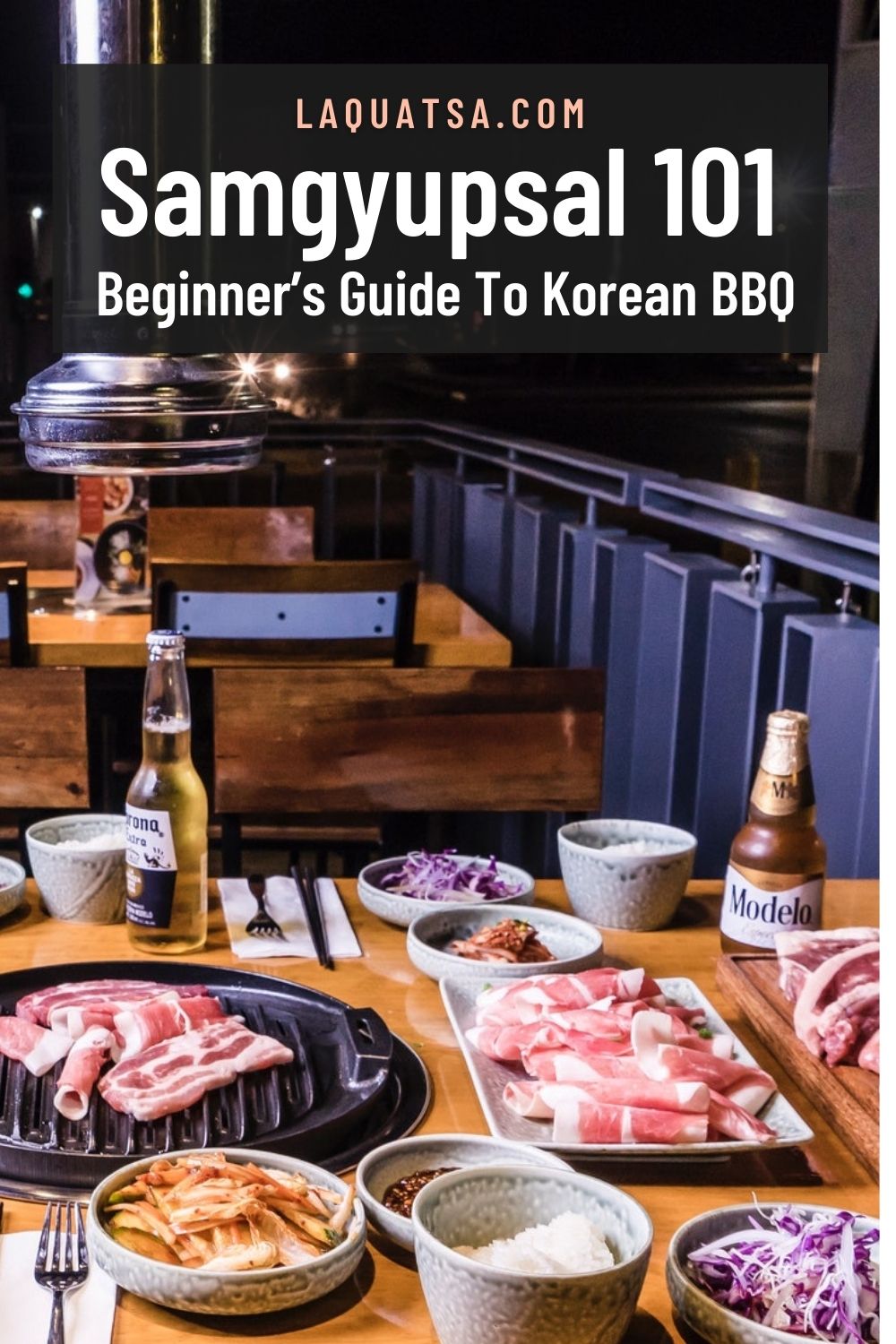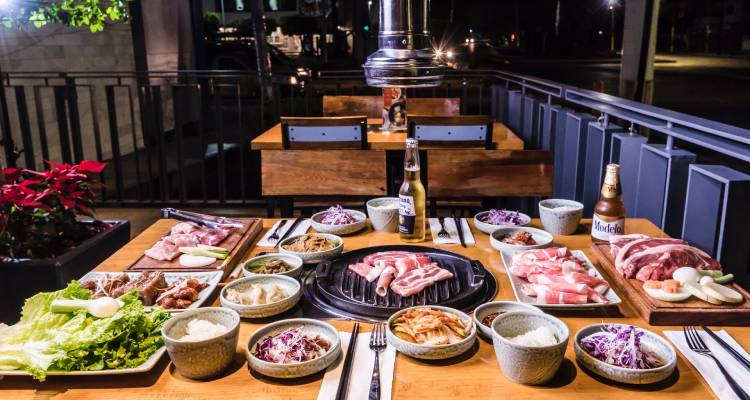You’ve probably heard about Korean BBQ (better known as samgyupsal in the Philippines) from your favorite K-Drama or your foodie friend’s Instagram story. This wrapped grilled meat is now a rite of passage for Filipinos who want to branch out to international cuisine.
Korean cuisine is gaining popularity in the country mainly because of samgyupsal. If you haven’t tried Korean BBQ before, then you are missing out on some really good stuff! Grab your friends (who are probably craving Korean BBQ as much as you do) and check out this ultimate guide for your next samgyup-session!
Related: 10 Unli Samgyupsal Restaurants In Angeles City (For As Low As ₱199)
Samgyupsal: What’s Inside?
There’s no right or wrong way to eat Samgyupsal. You can add or remove ingredients to your will, but if you’re just starting to get to know Korean cuisine, you might want to know what it’s made up of before trying it your way.
Meat


You can’t have a barbecue if you don’t have meat, duh! You can choose between a variety of pork and beef cuts. Most restaurants allow you to grill different meat cuts, so don’t be overwhelmed with your choices and try them all.
Side Garnishes
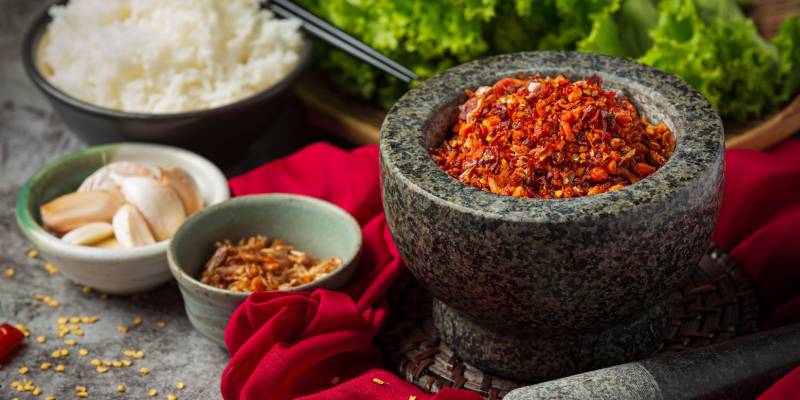

Garnishes add interesting flavors to your ssam. Common side garnishes include garlic cloves, chili or jalapeños, etc.
Ssamjang
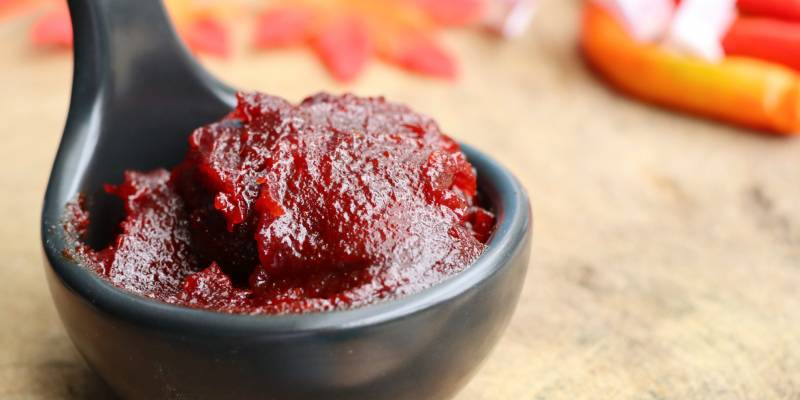

Also known as soybean paste is an essential ingredient in Koren BBQ. This sauce adds a zest of spiciness and exciting flavors to your ssam.
Banchan
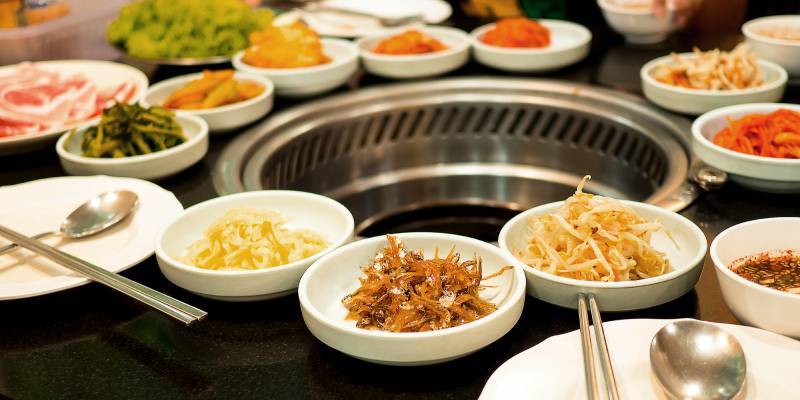

Banchan or side dishes are a great way to cleanse your palate while eating Korean BBQ. Some side dishes can also be added to your ssam to integrate a variety of tastes!
Ssam
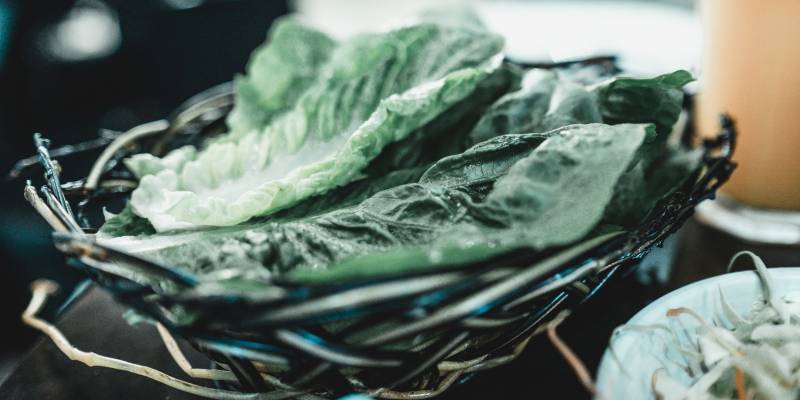

It is that leafy vegetable you use to wrap your grilled meat and banchan in! (It may also refer to wrapped Korean dishes). Lettuce is mainly used for samgyupsal, but you can also opt for other greens.
Types of Meat Cuts
In this type of dish, the meat is the showstopper. Selecting what goes into your ssam is probably the most essential step of eating Korean BBQ.
If you’re eating at a Korean restaurant, the place will most likely offer different types of meat cuts. On the other hand, if you’re planning to do this in the comforts of your home, you might want to familiarize yourself with the various meats used in Korean BBQ to have that whole samgyup-experience.
Pork
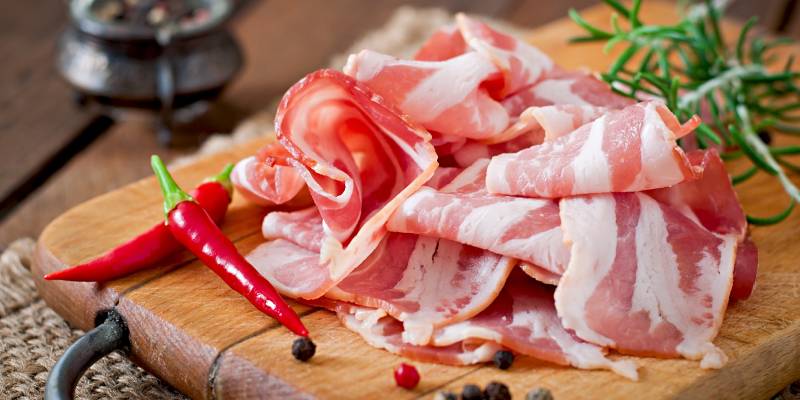

Pork belly (samgyupsal) is the most popular meat used for Korean BBQ. This three-layered meat has the perfect combination of lean meat and fat, giving it a rich, flavorful taste when you put it on the grill. If you’re looking for something on the lean side, you should ask for pork steak cuts.
Beef
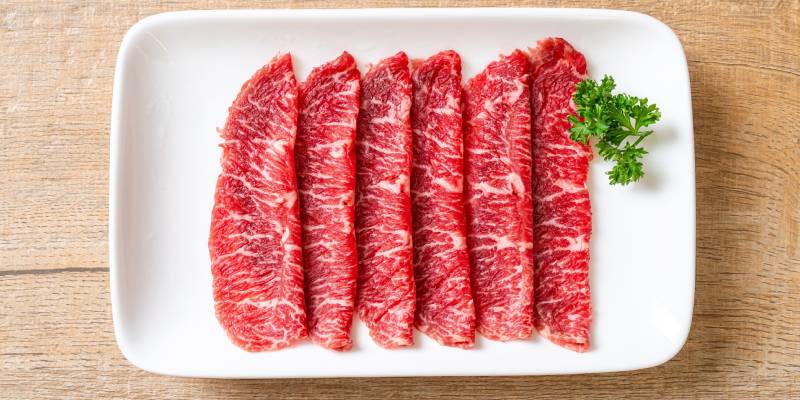

Beef is famous in Korean cuisine because of its lush taste. If you want a combination of sweet, savory, and smoky flavors, you might want to try beef bulgogi—a thinly sliced premium beef cut. Beef sirloin and ribeye cuts are also available for those who want a little more bite.
PROTIP: If you’re trying different types of meat, go for the leaner meat first before the fatty ones and grill seasoned meats before the marinated ones. Ask for a new grill if the one you’re using is already charred.
How to eat Samgyupsal?
Now that you’ve picked out the meat you want to try, it’s time for some grilling action. Whether you’re in a barbecue place or your kitchen, follow these foolproof steps to make the perfect Korean BBQ!
#1. Cut the Meat.
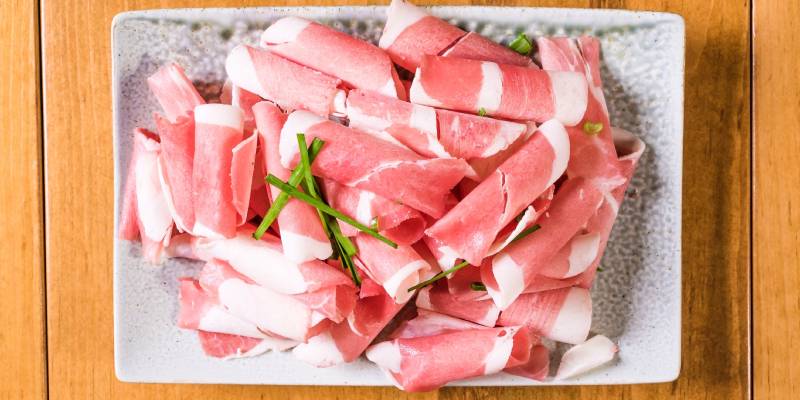

Use the scissors you were provided with to cut those thick layers of meat into bite-sized pieces.
#2. Place the Meat on the Grill.
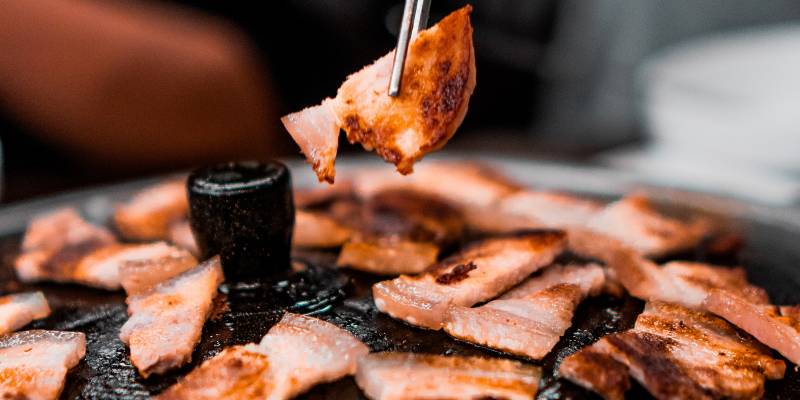

Cook until golden brown (or until you see those charred lines, your choice!) Grilling should only take about two minutes before the meat is ready to be eaten.
#3. Make your ssam!
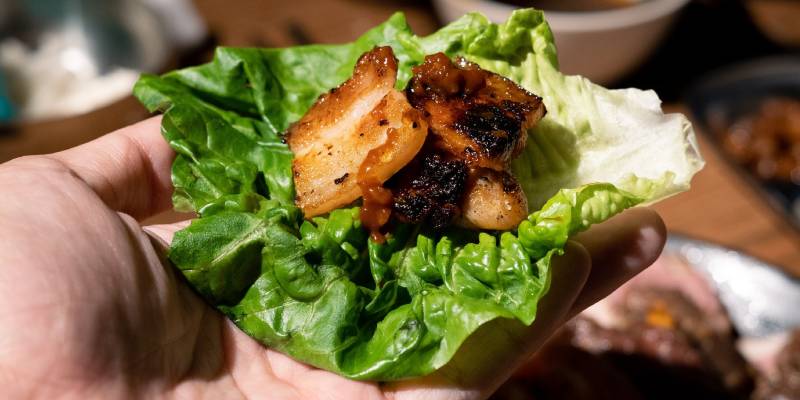

Get your leafy greens, put your meat in, and forget the ssamjang and side dishes! Wrap it and devour it in one go!
PROTIP: Don’t overdo your ssam! Wrapped Korean BBQ is meant to be eaten in one bite, so make sure that you only put small portions of everything on your greens.
Best Banchan (Korean Side Dishes)
Any Korean barbecue meal is not complete without side dishes! These side dishes cleanse your palate and introduce your tongue to new Korean flavors. Here are some common ones you might find in restaurants:
Kimchi
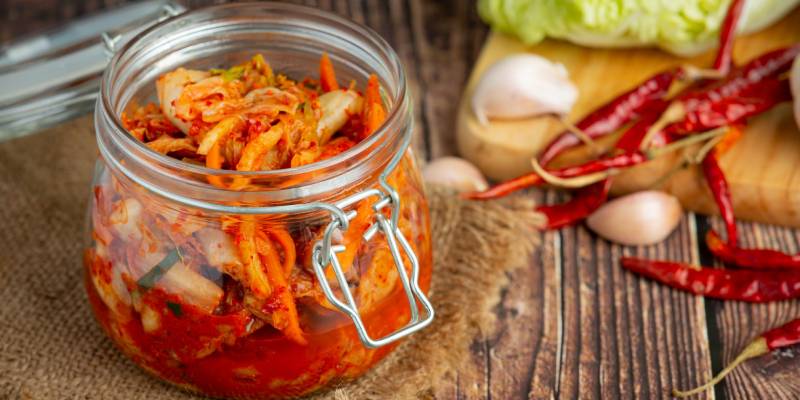

Kimchi is easily the most popular Korean side dish out there. It’s made up of salted and fermented vegetables that give off a sour, tangy taste—a contrast to the barbecue’s savory flavors.
Fish Cakes
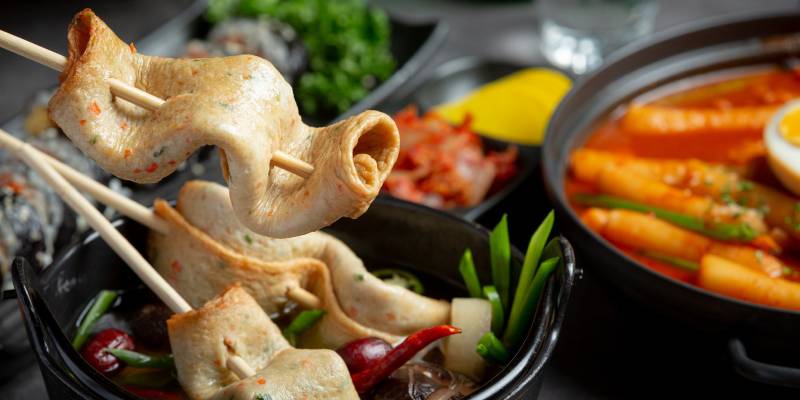

Spicy fish cakes are a staple side dish in Korea. They are made from thinly sliced fish cake sheets that absorb sweet and spicy seasonings.
Japchae
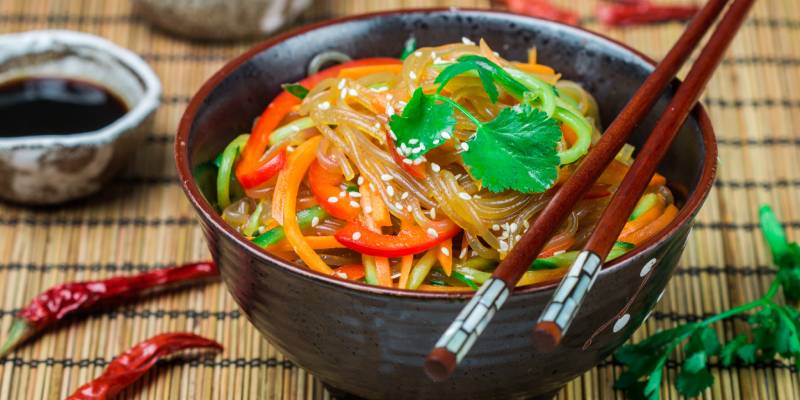

Japchae, or stir-fried glass noodles, is a must-try. The dish is a colorful bunch featuring eggs, carrots, spinach, and beef.
Soybean Sprouts
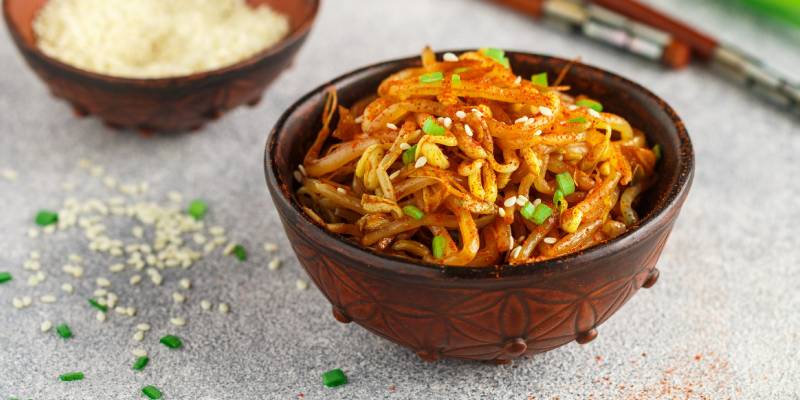

Soybean sprouts give your meals a little extra crunch! This can be eaten separately or in your ssam.
Pickled Radish
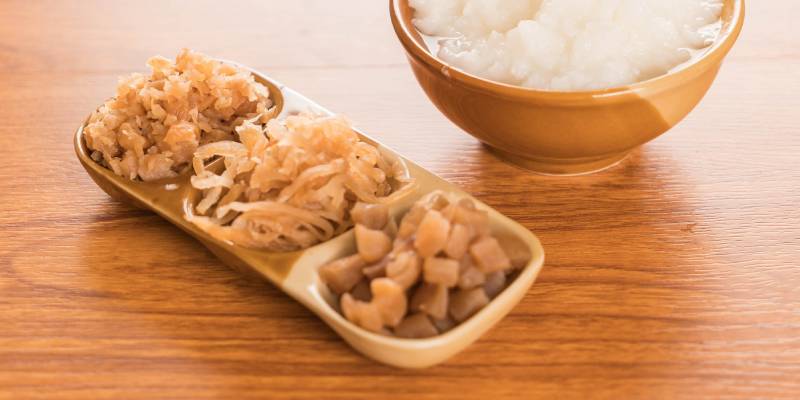

Pickled radish complements spicy food perfectly. It comes with a variety of flavors—salty, sweet, or sour. Our suggestion? Go for the sweeter one.
Drinks, Anyone?


With all that meat going into your body, you’ll need to flush it with some cold beverage! Korean BBQ is best paired with drinks like beer, soju, and makgeolli (sparkling rice wine). Rule of thumb, make sure to select only the light drinks! Save those hard alcoholic beverages for when you go out dancing.
Some parting words…
Before you close this tab and head out to the nearest Korean restaurant, here are some tips and tricks to maximize that samgyup-experience!
Always ask if they can refill your side dishes for free.
Most of the time it is! My favorite trick: ask if they have cheese fondue to dip your grilled meat in!
Some restaurants also serve other Korean dishes and desserts!
Don’t forget to try their drinks and ice cream, and make sure to leave the place with a happy stomach and a satisfied smile on your face.
If you’re electing only one person to grill, don’t volunteer to be the designated chef!
Your friends will probably beat you to the meat you’re grilling. But hey, grilling is an essential part of the experience, and the satisfaction you get from cooking is worth getting your hands a little occupied.
Schedule your gala during sweldo time because samgyupsal is best eaten with the barkada!
A large group is also ideal if you want to try various types of meat and side dishes.
Make reservations or go to the restaurant early.
The one thing that I’ve noticed in Korean BBQ restaurants is that it is always crowded! This creates a long queue outside the restaurant that can sometimes test your stomach’s patience. The best way to combat this is to, of course, beat everyone to the restaurant.
Grill Samgyup Sa Bahay!
If you’re up for a more intimate experience, Korean BBQ sets are available from some Korean restaurants and grocery stores, so you could try them at home. Here are the best electric grillers to enjoy samgyup sa bahay!
Be ready to smell like barbecue!
An overhead hose will suck the smoke out of the grill, but the smell will most likely stick onto your clothes. If you’re planning to go out after your meal, it’s probably best to bring a fresh set of clothes. But if you forgot to pack them, just wear the scent like it’s a badge of honor. Just kidding!
Summary
Now that you’re equipped with the essential knowledge about Korean BBQ, it’s time to put all these theories into practice. Grab your purse, face masks, and an empty stomach to the nearest Korean restaurant and grill to your heart’s content!
